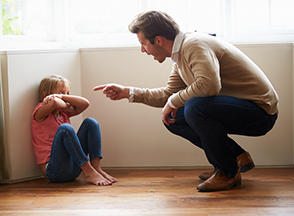How Many ACE’s Are in Your Deck? How Adverse Childhood Experiences Affect Us

What is an “ACE”? How do ACEs affect your life? This question is more important than most of us probably realize.
ACE stands for Adverse Childhood Experience, a term from a study that looked at how abuse and other difficult experiences during childhood affect us later in life. This very large study convincingly links stress in early life to problems with health and well-being in adulthood.
The research looked at 10 types of traumatic events people commonly experience as children, including various types of child maltreatment, being exposed to depression and substance abuse among family members, parental divorce, and more. You can discover your own ACE score (it will range from 0 to 10) here: http://acestudy.org/the-ace-score.html
What “ACEs” Do
A person who goes through many “ACEs” during childhood has experienced trauma. They might have trouble learning, bonding with others, and feeling emotionally secure. Unless they receive help and treatment, these problems can “snowball” as time goes on. As adults, they may be much more likely to engage in risky behaviors, develop certain physical diseases, and experience a variety of negative outcomes.
For instance, a person whose ACE score is a 4 is seven times as likely to be an alcoholic and twice as likely to smoke as someone with a score of 0. He or she is 240% more likely to have an STD, and 1200% more likely to attempt suicide. There are many statistics like this showing that experiencing more ACEs increases our risk of health problems and risky behavior.
Of course, ACEs are not destiny. Many people experience risk factors in their childhood and go on to achieve great things. Protective factors not reflected in the ACEs survey can make a huge difference, and personal resilience is also a factor. However, the research in this area is strong.
ACEs and PTSD
ACEs harm children because these experiences can overload them with stress hormones, make it hard for them to develop strong relationships, and prevent them from learning and developing as they should. They can also result in the “side effect” of Post-Traumatic Stress Disorder (PTSD). The prevalence of PTSD in young children is startling. According to The National Institute for Trauma and Loss in Children, 26% of children in the U.S. witness or experience a traumatic event before they turn four years old.
- 60% of adults say they experienced abuse or other traumatic events in their own childhoods
- 11% of girls age 14-17 reported experiencing sexual assault or abuse during the past year
- 41% of youth under 18 reported experiencing a physical assault in the last year
- 14% of children have experienced abuse by a caregiver
- 70% of children living in poor neighborhoods are exposed to trauma
With these numbers being what they are, it is no surprise that it is quite common to experience ACEs. About 2/3 of those studied reported at least one ACE, and forty percent reported two or more.
What Can We Do?
Awareness
Being aware of your own ACE score and that of any children you parent or are involved with is one hard, but important step to take. These events do not “go away,” but with time, care and effort, progress is possible. Building supportive relationships with others, working on effective communication skills, developing healthy self-care, taking care of your body, and learning to communicate in a healthy way are all things we can do to reduce the effects of ACEs. Therapy and counseling can also be an extremely important part of helping adults and children heal from ACEs.
Diagnosis
Another way we can help is by properly identifying young people who may have PTSD, which is not as easy as it sounds. Symptoms of the problem can include aggression, reckless or aggressive behavior, being irritable or easy to startle, inattention, learning problems, depression, withdrawal, and sleep issues.
However, most of these symptoms are the same as those seen with Attention Deficit Hyperactivity Disorder (ADHD) or Oppositional Defiant Disorder (ODD), which makes diagnosing any of these disorders very difficult. If children are incorrectly diagnosed with ADHD or ODD, they will most likely be put on medication to lessen symptoms and control behavior. But if the child has PTSD, he or she needs play therapy and behavior strategies, not medication. The correct diagnosis is critical in helping the child progress to better mental health.
Changing Communities
A final way schools, professionals, and towns and cities can help is by striving to become so-called “trauma-informed communities.” For instance, in schools, trauma-informed professionals who understand the effects of ACEs can take the time to understand the underlying causes of problem behavior and make efforts to connect with the child on a personal level. Professionals who work with clients in the community can also talk about ACEs and consider ACEs as they reach out to clients.
While there are many wonderful trainings, programs, and intervention strategies out there, it's also true that sometimes what matters most is giving our time. When one caring adult consistently connects with a child, it can make a difference in their life forever.
Learn more:
The National Institute for Trauma and Loss in Children
Peace4Tarpon: Learn about Tarpon Springs, FL, a trauma-informed community.
By Frances Rodriguez, M.S. candidate, Department of Family, Youth and Community Sciences, University of Florida, and Carol Church, lead writer, SMART Couples, Department of Family, Youth and Community Sciences, University of Florida
References
Felitti, V. J. (2002). The relation between adverse childhood experiences and adult health: Turning gold into lead. Permanente Journal, 6, 44-47. Retrieved from https://www.thepermanentejournal.org/files/Winter2002/goldtolead.pdf
Felitti, V. J., Anda, R. F., Nordenberg, D., Williamson, D. F., Spitz, A. M., Edwards, V., Marks, J. S. (1998). Relationship of childhood abuse and household dysfunction to many of the leading causes of death in adults: The adverse childhood experiences study. American Journal of Preventive Medicine, 14, 245-258.
National Institute for Trauma and Loss in Children. (2017) Retrieved from https://www.starr.org/index.php
Steele, W., & Raider, M. (2001). Structured sensory intervention for traumatized children, adolescents, and parents: Strategies to alleviate trauma. Lewiston,NY: Edwin Mellen Press.
Return to Topic: Advocating For Your Child


